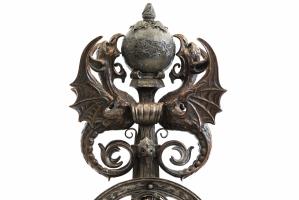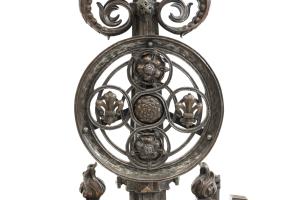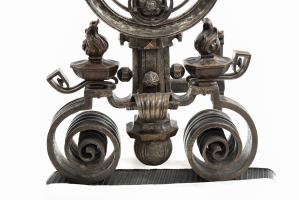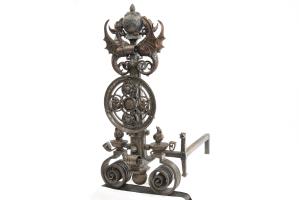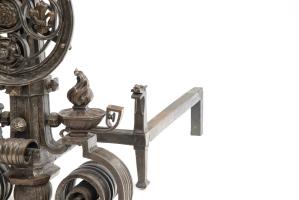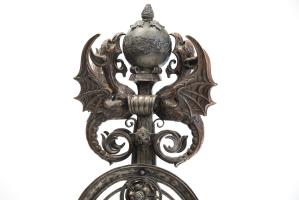Andiron
An andiron is a metal grate that prevents large, flaming logs from rolling out of a fireplace. The decorative pair that Paul Beau and his workshop designed for the Parliamentary Reading Room in 1923 are magnificent.
They are 1.23 metres tall and fashioned of metal and wrought iron. A stout base of scrolled design supports two lanterns with swirling flames, which rise to a large medallion with badges of fleur-de-lis and Tudor roses. At the top, a silver-coloured and ball-shaped finial is decorated with maple leaves, and attacked by two angry wyverns — a two-footed dragon often seen in heraldic design.
